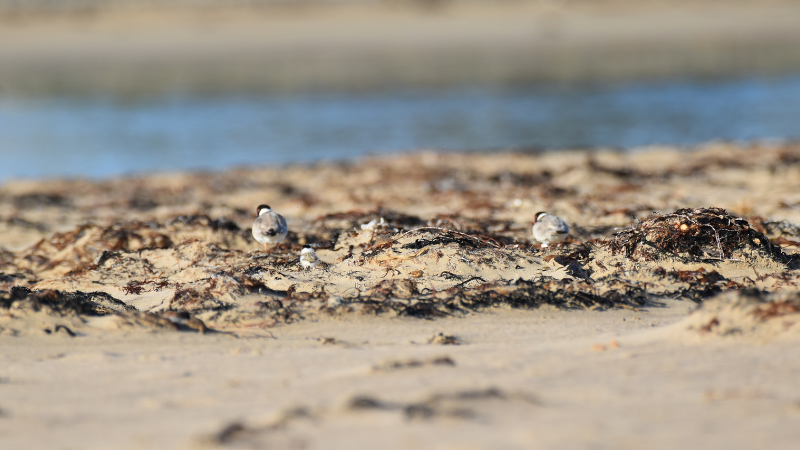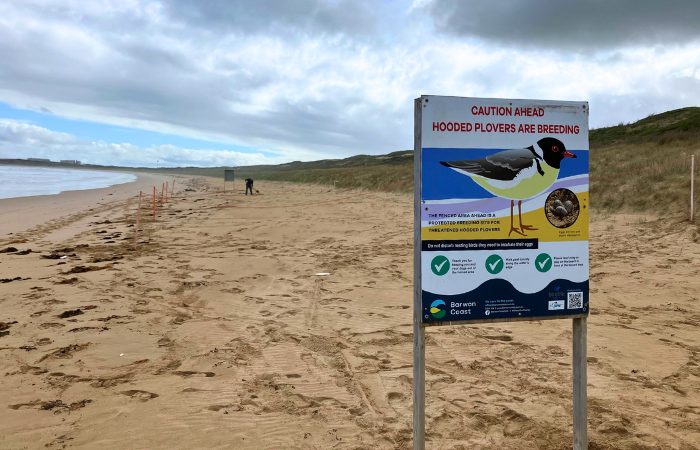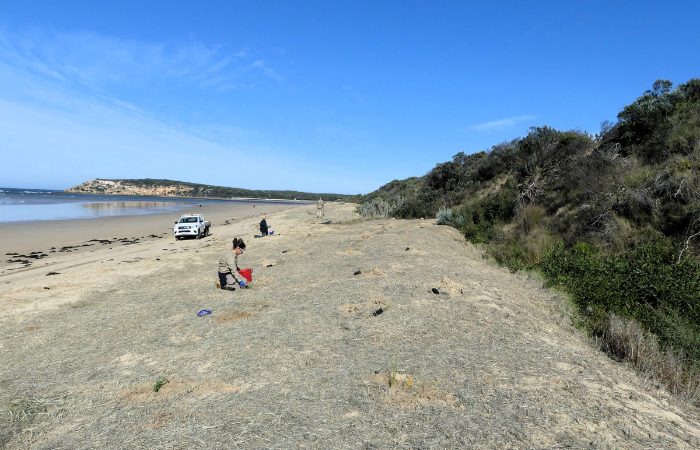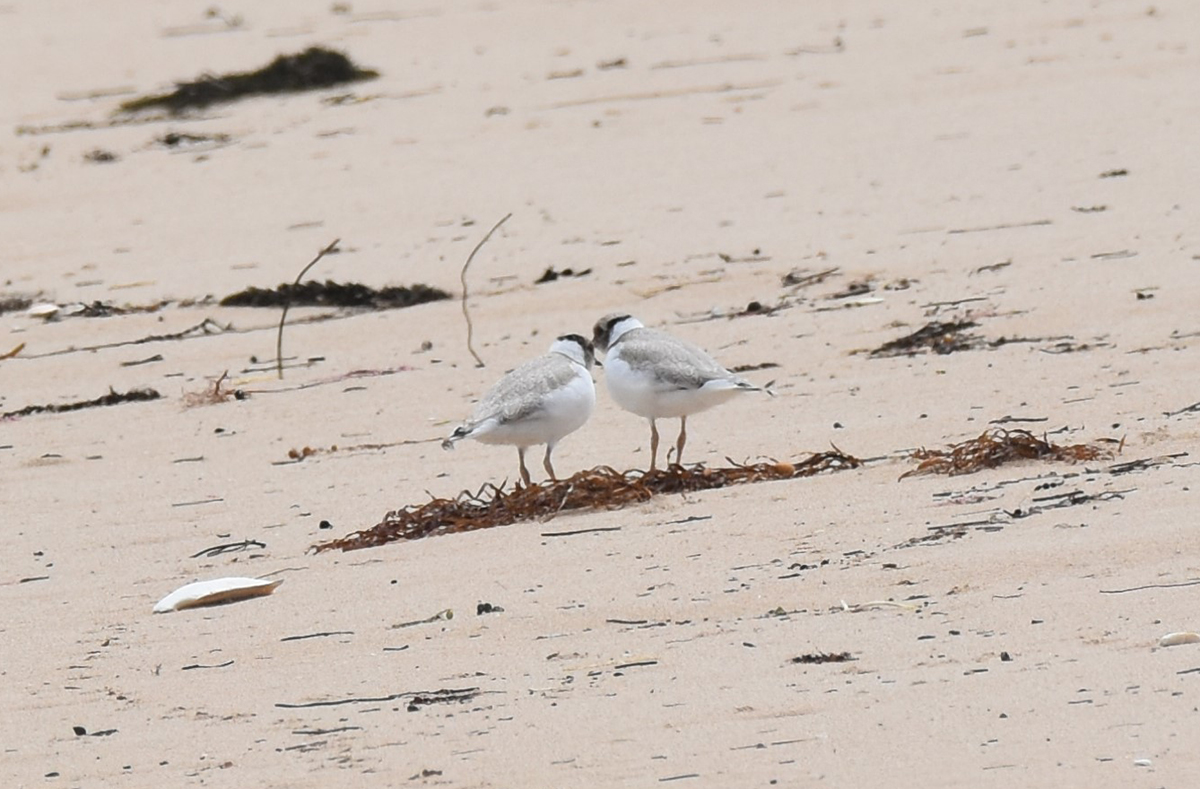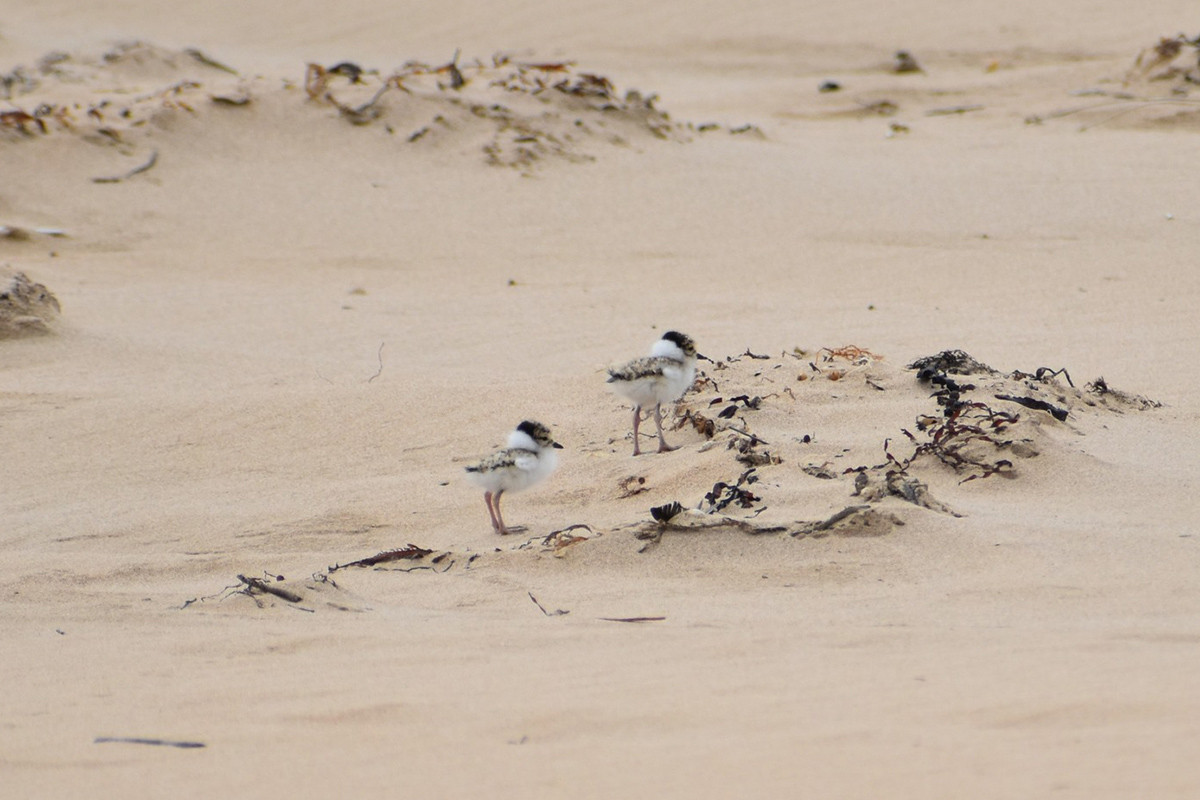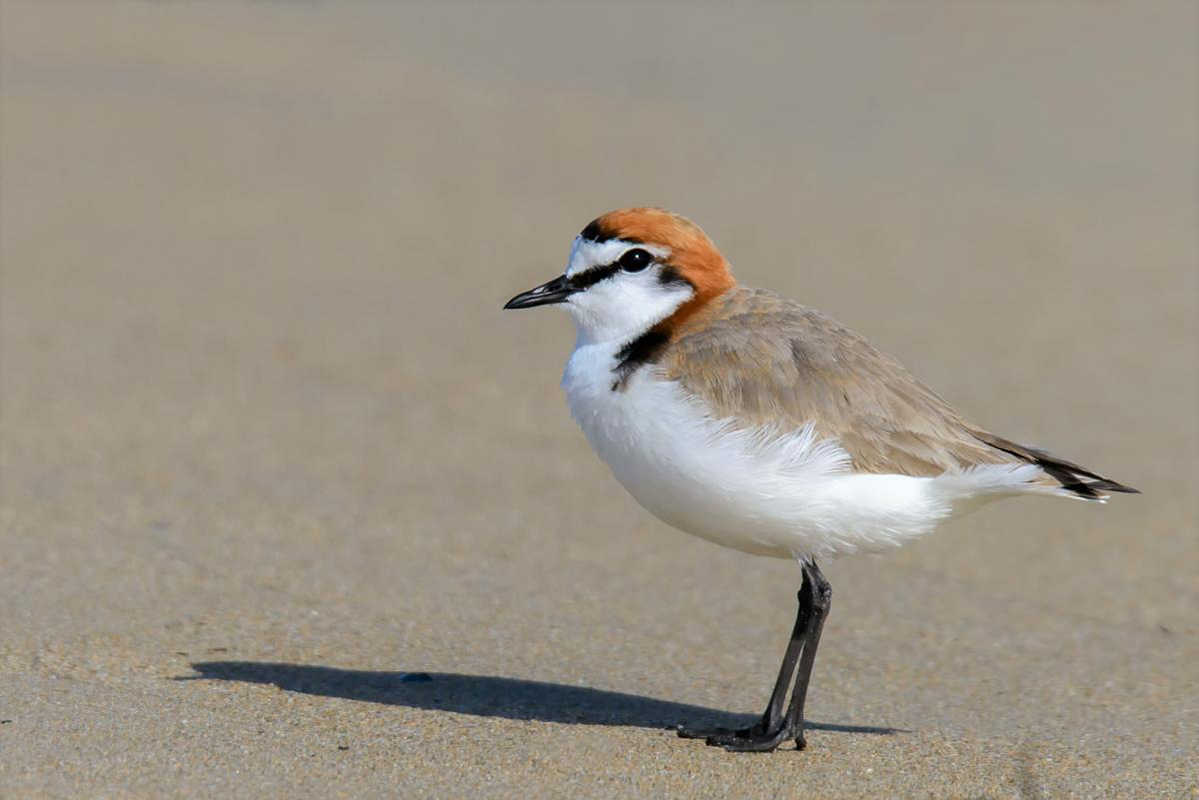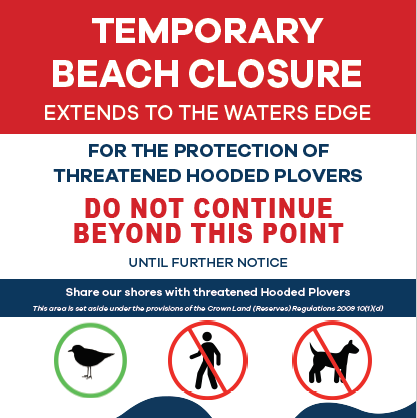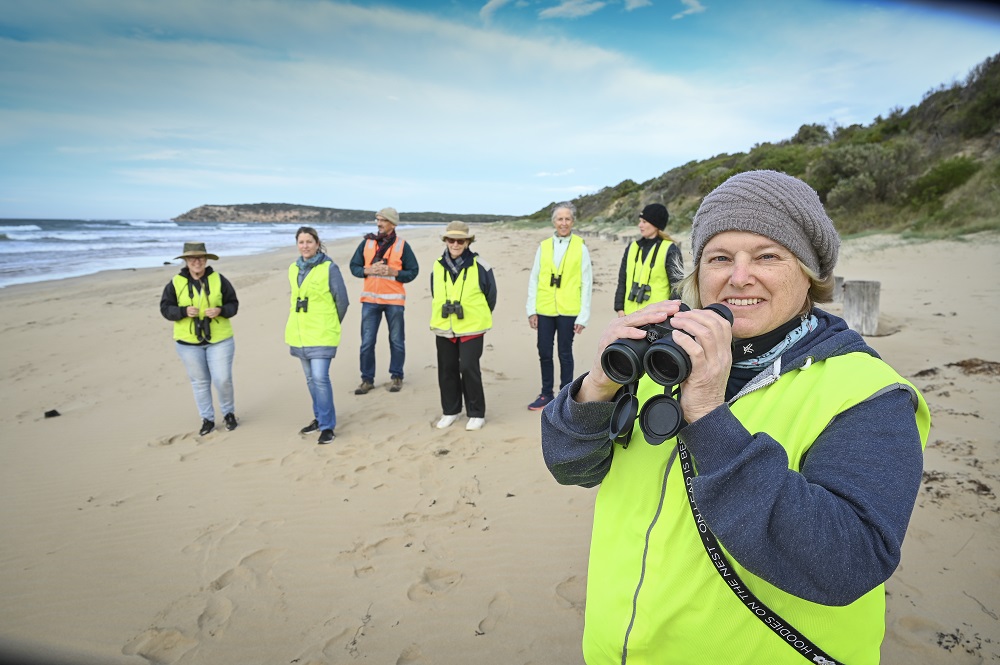Barwon Coast work closely with local conservation groups to protect Hooded Plovers.
Hooded Plovers are one of Australia’s most vulnerable birds and are protected wildlife under State and Federal legislation. There are only an estimated 740 Hooded Plovers surviving along the entire Victorian coastline (Birdlife Australia 2022).
There are 11 resident breeding pairs living along our local coastline including Point Lonsdale, Collendina, Ocean Grove, Barwon Heads (13th Beach) and Breamlea.
These tiny birds (affectionately known as ‘Hoodies’) nest along the Barwon Coast from September to March. The breeding habits of Hoodies mean that they are in direct conflict with not only humans and dogs, but also with introduced predators such as foxes and cats.
